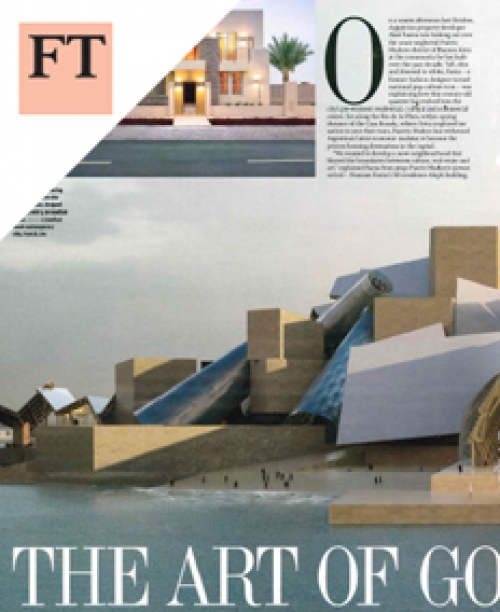

The Art of Good Living
David Kaufman... Two hours south, in Miami Beach, art - along with contemporary design - has also played a vital role in the brand-building of the city's once-dormant Design District. Set across Biscayne Bay from Atlantic-fronting South Beach, the area has evolved over the past decade from an obscure residential backwater to a thoughtfully conceived culture and culinary quarter, with more than 125 galleries, showrooms, artist studios and restaurants. "The area's success is unprecedented in the US for a city of Miami's relatively modest size," says urban theorist Richard Florida, "it is an unmistakable sign that the economic and commercial centre of gravity is shifting away from the suburbs back to the urban core."
Unlike Windsor or Puerto Madero, the Design District wasn't "master-planned" and flows freely into surrounding neighbourhoods such as Midtown - home to the annual Art Miami event - and Wynwood, an important visual arts district with galleries that include The Rubell Family Collection and The Cisneros Fontanals Art Foundation. But the district did have a chief protagonist in property entrepreneur Craig Robins - whose company, Dacra, began overhauling much of the area in the late 1990s. Although most of this investment focused on retail, restaurant and gallery spaces, Robins solidified the precinct's cultural bona fides by establishing Design Miami - the annual designfocused counterpart to Art Basel Miami Beach. Though it has since relocated to South Beach, the Design District continues to lure important cultural totems - most notably the De la Cruz Collection, one of the largest contemporary art display spaces in all of the city.
The district and its surrounding areas have also attracted buyers who appreciate the pedestrian-friendly layout and thriving restaurant scene. "This was a place that had to 'happen';' says longtime resident Lee Schrager, founder of the South Beach Wine & Food Festival. "It has finally given Miami a real city centre; it's one of the few truly car-free parts of town." Schrager estimates that his 1914 water-facing home has increased in value by at least 100 per cent over the past 18 years.
Today, upper-end residences in the Design District and nearby regularly sell for in excess of $1m. South Beach International Realty is offering a two-bedroom penthouse in the Blue condominium development for $799,000, slightly beyond the Design District's borders, while just over a mile away, Fortune International Realty has a newer two-bedroom apartment in the Paramount Bay complex (pictured above right), priced at $1.02m.
Robins is now scaling up his initial vision. In partnership with L Real Estate - the Paris-based luxury retail private equity fund in which L VMH is an investor - he is converting another 12 Design District blocks into a more formally master-planned residential, commercial and cultural development. Along with a hotel and nearly two dozen LVMH and Richemont boutiques, the $312m project will include at least 100 apartments in a building designed by Spanish architects Office of Architecture in Barcelona, entering the market in 2015. Robins describes the housing as a mix between condominiums and lofts - with the entire development anchored by pieces from his own contemporary art and design collection, most notably a central plaza with Buckrninster Fuller's seminal Fly's Eye dome.
Much like Faena, Robins - who also owns works by Marc Newson and Zaha Hadid - says culture serves as both an aesthetic amenity and value-generator if done right. "Buyers no longer want something that is merely 'expensive' or 'fancy', they want to participate in neighbourhoods that have some real meaning," he says. "Our goal is to maintain the Design District as a relatively low-density place, carefully growing it to retain its historic spirit."
